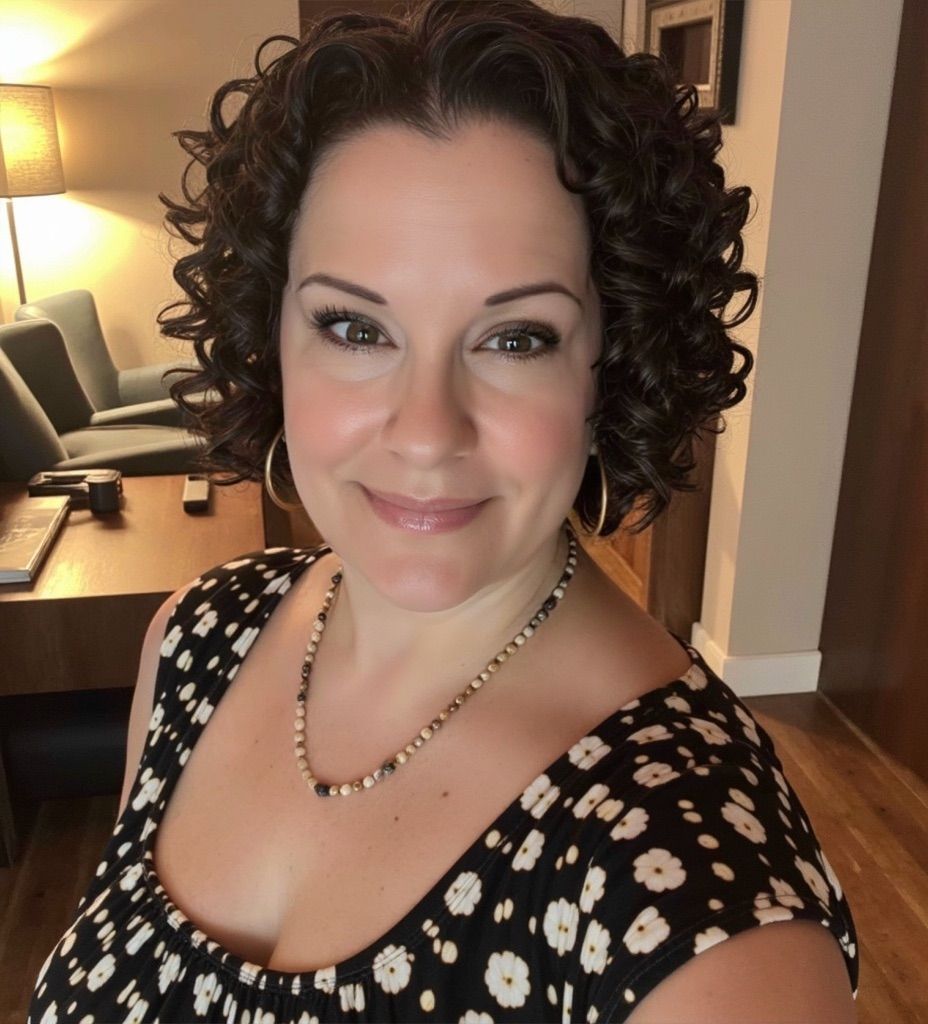Your Financial Plan to Becoming Debt-Free Post-COVID
Lisa Manwaring • May 20, 2020

Although everyone is experiencing the impact of COVID-19 differently, one thing has become evident. As a result of the pandemic, we’re all paying closer attention to our finances. Looking at life post-COVID, it’s going to be essential to have a financial plan.
Here are some action points to consider as life returns to some sense of routine and as you plan your financial future.
Pay off your revolving consumer debt first.
If you have consumer debt, or if you’ve gone into debt to cover your expenses through social-isolation, paying off any consumer debt should be your priority. This would be your credit cards and line of credits.
You want to start by making any additional payments on the highest interest debt while maintaining minimum payments on everything else. Once the first debt is paid off, roll all your payments onto your next debt. And so on, until you’ve paid off all your revolving consumer debt.
Set up an emergency fund second.
It doesn’t make much sense to put money in a bank account for an emergency fund when you have revolving debt that is incurring interest. Once you’ve paid off all your revolving debt, you will still have access to that money again should you need it, which acts like an expensive emergency fund before you have money in the bank.
Finance experts suggest you should have 3-6 months in a savings account in case you lose your job or experience unforeseen health issues. And in the face of the most recent global pandemic; the unexpected has just happened, this is the proof that the experts are right, and having an emergency fund is an excellent idea.
Then pay off your instalment loans.
With all your revolving debt paid off and a healthy amount of money in the bank to prepare for the next national emergency, you should start paying off your instalment loans, like a car loan or student loans. Start with the highest interest loans first, working your way through until everything is paid off. Most loans will allow you to make additional payments, double-up on payments when possible.
Start saving for a downpayment.
If you don’t yet own a home, and you would like to work through a plan to get you there, please contact me anytime. Although you don’t have to be completely debt-free to qualify for a mortgage, the less money you owe, the more money you are allowed to borrow in mortgage financing.
And the same principles used to pay down your debt can be used to save for a downpayment. The more money you have as a downpayment, the more you qualify for, and the less interest you will pay over the long run.
If you already own a home, you’re debt-free, and you have a healthy emergency fund, you should consider accelerating your mortgage payments.
Accelerate your payment frequency.
Making the change from monthly payments to accelerated bi-weekly payments is one of the easiest ways you can make a difference to the bottom line of your mortgage. Most people don’t even notice the difference.
A traditional mortgage splits the amount owing to 12 equal monthly payments. Accelerated biweekly is simply taking a regular monthly payment and dividing it in two, but instead of making 24 payments, you make 26. The extra two payments accelerate the pay down of your mortgage.
Increase your mortgage payment amount.
Unless you opted for a “no-frills” mortgage, chances are you can increase your regular mortgage payment by 10-25%. This is an excellent option if you have some extra cash flow to spend in your budget. This money will go directly towards paying down the principal amount owing on your mortgage and isn’t a prepayment of interest.
The more money you can pay down when you first get your mortgage, the better, as it has a compound effect, meaning you will pay less interest over the life of your mortgage.
Also, by voluntarily increasing your mortgage payment, it’s kind of like signing up for a long term forced savings plan where equity builds in your house rather than your bank account.
Make a lump-sum payment.
Again, unless you have a “no-frills” mortgage, you should be able to make bulk payments to your mortgage. Depending on your lender and your mortgage product, you should be able to put down anywhere from 10-25% of the original mortgage balance. Some lenders are particular about when you can make these payments; however, if you haven’t taken advantage of a lump sum payment yet this year, you will be eligible.
Review your options regularly.
As your mortgage payments are withdrawn from your account regularly, it’s easy to simply put your mortgage payments on auto-pilot, especially if you have opted for a five year fixed term.
Regardless of the terms of your mortgage, it’s a good idea to give your mortgage an annual review. There may be opportunities to refinance and lower your interest rate, or maybe not. Still, the point of reviewing your mortgage annually is that you are conscious about making decisions regarding your mortgage.
Want to review your existing mortgage, or discuss getting a new one?
Contact me anytime!
RECENT POSTS

What Is a Second Mortgage, Really? (It’s Not What Most People Think) If you’ve heard the term “second mortgage” and assumed it refers to the next mortgage you take out after your first one ends, you’re not alone. It’s a common misconception—but the reality is a bit different. A second mortgage isn’t about the order of mortgages over time. It’s actually about the number of loans secured against a single property —at the same time. So, What Exactly Is a Second Mortgage? When you first buy a home, your mortgage is registered on the property in first position . This simply means your lender has the primary legal claim to your property if you ever sell it or default. A second mortgage is another loan that’s added on top of your existing mortgage. It’s registered in second position , meaning the lender only gets paid out after the first mortgage is settled. If you sell your home, any proceeds go toward paying off the first mortgage first, then the second one, and any remaining equity is yours. It’s important to note: You still keep your original mortgage and keep making payments on it —the second mortgage is an entirely separate agreement layered on top. Why Would Anyone Take Out a Second Mortgage? There are a few good reasons homeowners choose this route: You want to tap into your home equity without refinancing your existing mortgage. Your current mortgage has great terms (like a low interest rate), and breaking it would trigger hefty penalties. You need access to funds quickly , and a second mortgage is faster and more flexible than refinancing. One common use? Debt consolidation . If you’re juggling high-interest credit card or personal loan debt, a second mortgage can help reduce your overall interest costs and improve monthly cash flow. Is a Second Mortgage Right for You? A second mortgage can be a smart solution in the right situation—but it’s not always the best move. It depends on your current mortgage terms, your equity, and your financial goals. If you’re curious about how a second mortgage could work for your situation—or if you’re considering your options to improve cash flow or access equity—let’s talk. I’d be happy to walk you through it and help you explore the right path forward. Reach out anytime—we’ll figure it out together.

Going Through a Separation? Here’s What You Need to Know About Your Mortgage Separation or divorce can be one of life’s most stressful transitions—and when real estate is involved, the financial side of things can get complicated fast. If you and your partner own a home together, figuring out what happens next with your mortgage is a critical step in moving forward. Here’s what you need to know: You’re Still Responsible for Mortgage Payments Even if your relationship changes, your obligation to your mortgage lender doesn’t. If your name is on the mortgage, you’re fully responsible for making sure payments continue. Missed payments can lead to penalties, damage your credit, or even put your home at risk of foreclosure. If you relied on your partner to handle payments during the relationship, now is the time to take a proactive role. Contact your lender directly to confirm everything is on track. Breaking or Changing Your Mortgage Comes With Costs Dividing your finances might mean refinancing, removing someone from the title, or selling the home. All of these options come with potential legal fees, appraisal costs, and mortgage penalties—especially if you’re mid-term with a fixed-rate mortgage. Before making any decisions, speak with your lender to get a clear picture of the potential costs. This info can be helpful when finalizing your separation agreement. Legal Status Affects Financing If you're applying for a new mortgage after a separation, lenders will want to see official documentation—like a signed separation agreement or divorce decree. These documents help the lender assess any ongoing financial obligations like child or spousal support, which may impact your ability to qualify. No paperwork yet? Expect delays and added scrutiny in the mortgage process until everything is finalized. Qualifying on One Income Can Be Tougher Many couples qualify for mortgages based on combined income. After a separation, your borrowing power may decrease if you're now applying solo. This can affect your ability to buy a new home or stay in the one you currently own. A mortgage professional can help you reassess your financial picture and identify options that make sense for your situation—whether that means buying on your own, co-signing with a family member, or exploring government programs. Buying Out Your Partner? You May Have Extra Flexibility In cases where one person wants to stay in the home, lenders may offer special flexibility. Unlike traditional refinancing, which typically caps borrowing at 80% of the home’s value, a “spousal buyout” may allow you to access up to 95%—making it easier to compensate your former partner and retain the home. This option is especially useful for families looking to minimize disruption for children or maintain community ties. You Don’t Have to Figure It Out Alone Separation is never simple—but with the right support, you can move forward with clarity and confidence. Whether you’re keeping the home, selling, or starting fresh, working with a mortgage professional can help you understand your options and create a strategy that aligns with your new goals. Let’s talk through your situation and explore the best path forward. I’m here to help.


